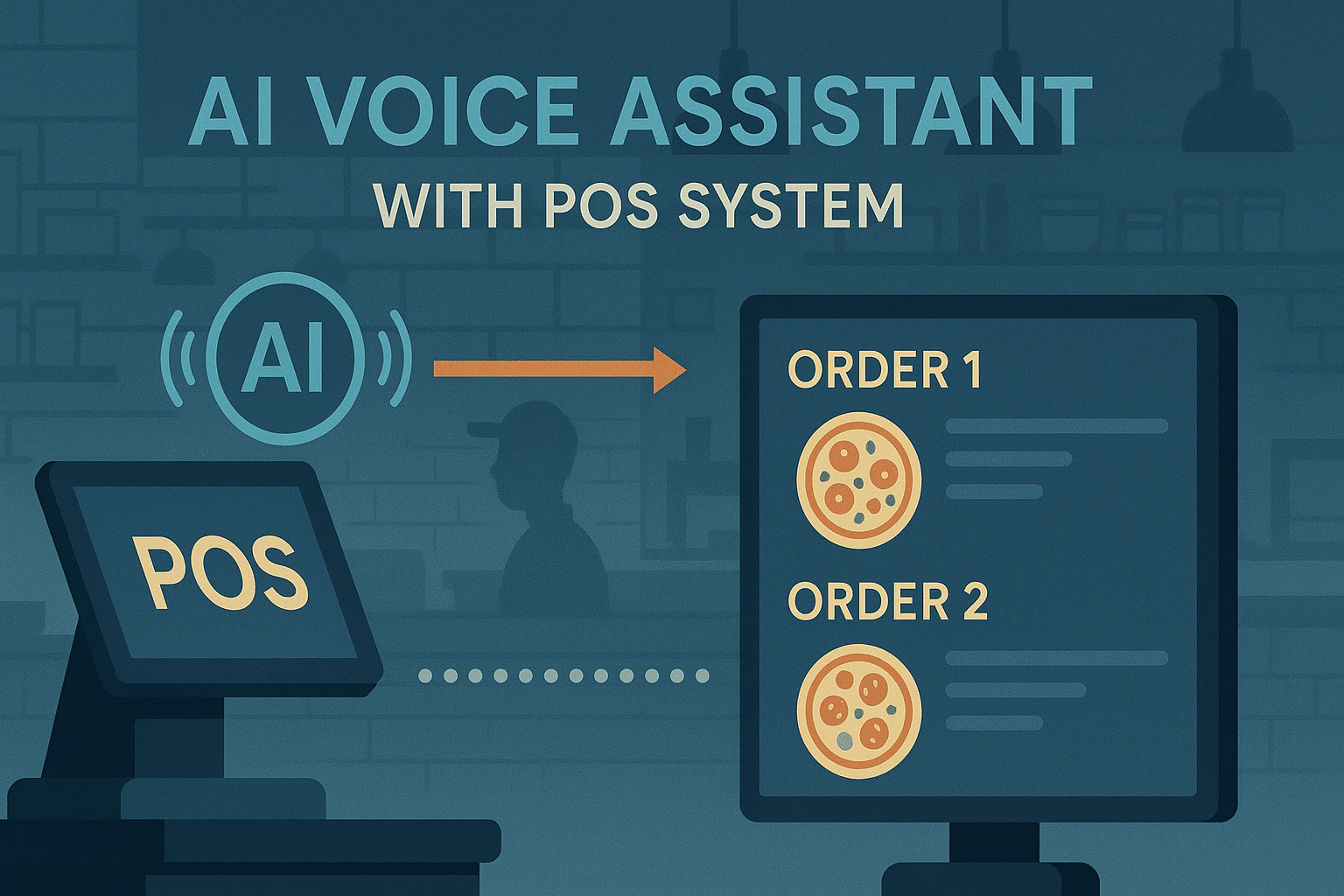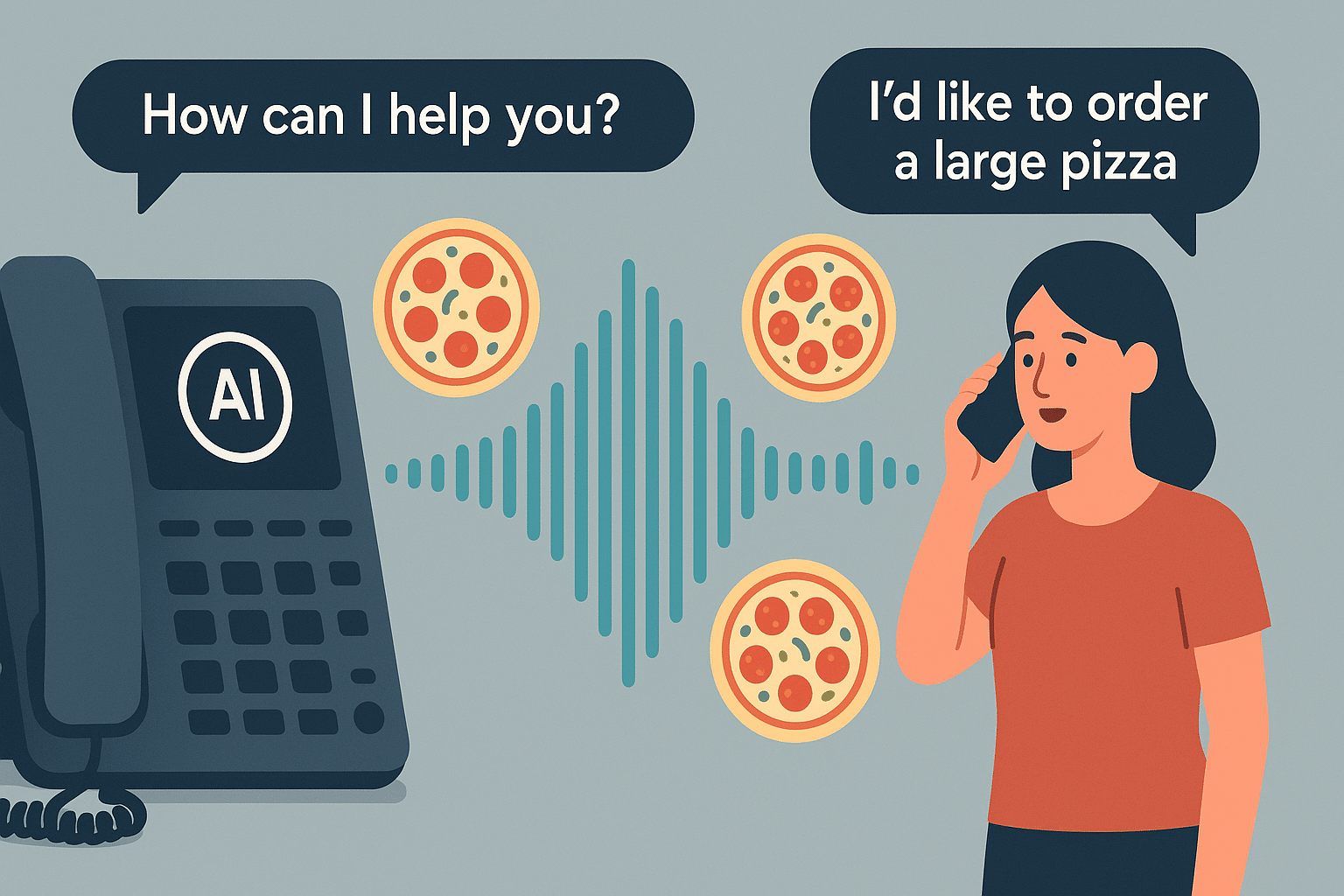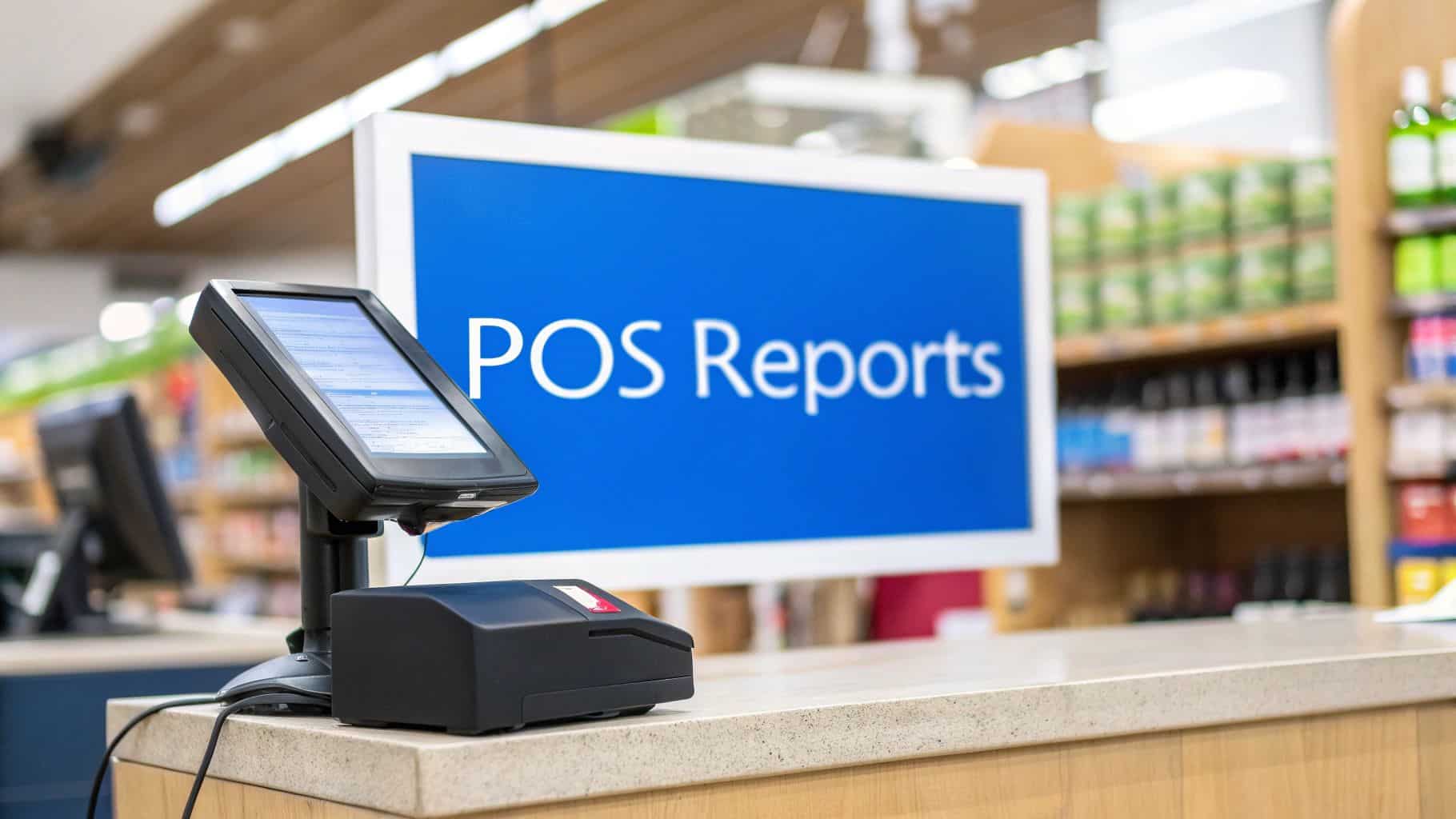Imagine calling your favorite pizza place and having an intelligent voice assistant take your order flawlessly. The Ai Voice Phone Assistant for Pizza is transforming how pizzerias handle calls, making ordering faster, smoother, and more personalized than ever before. Thanks to advances in voice recognition and natural language processing, this technology offers hands-free ordering, real-time updates, and smart upselling suggestions that delight customers and boost sales. In this article, we’ll dive deep into how AI-powered phone assistants streamline pizza ordering, enhance customer interaction, and integrate seamlessly with existing restaurant systems.
Table of Contents
- Understanding Voice AI in Pizza Ordering
- Efficient Menu Navigation and Order Customization
- Enhancing Customer Interaction and Support
- Integration and Automation Benefits
- The Future of Pizza Ordering with AI Assistants
- About Biyo POS
- FAQ
Understanding Voice AI in Pizza Ordering
The heart of an Ai Voice Phone Assistant for Pizza lies in its sophisticated voice AI technology. By harnessing speech recognition and natural language processing (NLP), this system can understand and respond to spoken orders with human-like accuracy and speed. This technology is no longer just a futuristic idea—it is actively revolutionizing pizza delivery automation across the globe.
How Voice Recognition Powers Pizza Ordering
Voice recognition technology serves as the fundamental component that enables the AI assistant to comprehend spoken words with remarkable precision. It converts the sound waves of speech into digital signals and applies complex algorithms to analyze phonemes, accents, and speech patterns. For example, when a customer calls and says, “I want a large pepperoni pizza with extra cheese,” the AI decodes these words swiftly, recognizing specific menu items and preferences without confusion. This capability dramatically reduces common ordering errors caused by misheard instructions or background noise.
Moreover, voice recognition systems are trained to handle diverse accents and dialects, ensuring inclusivity for a wide range of customers. Imagine a family with multiple members each placing orders with distinct voices; the AI can parse these inputs effectively without mixing up details. The system’s continuous learning ability allows it to adapt to new slang, regional expressions, or even newly introduced menu items, making it increasingly accurate over time.
Consider a busy Friday evening in a bustling pizzeria. Instead of waiting in long phone queues or repeating orders multiple times, customers experience a seamless interaction where the AI assistant understands and processes their requests instantly. This not only improves customer satisfaction but also increases the efficiency of the restaurant’s order-taking process.
The Role of Natural Language Processing
Natural Language Processing (NLP) is the critical technology that enables the AI assistant to move beyond simply recognizing words—it understands the meaning behind the customer’s speech. NLP interprets intent, context, and sentiment, allowing the system to engage in dynamic conversations that feel human and intuitive. For instance, if a customer says, “Can I have a gluten-free crust on my pizza?” the AI understands this as a customization request and updates the order accordingly.
NLP also allows the assistant to handle varied sentence structures and questions, such as, “Do you have vegan options?” or “Can I add extra olives to half the pizza?” The AI parses these complex instructions accurately, ensuring that customer preferences are met without confusion. Additionally, the assistant can detect polite nuances and urgency in tone, enabling it to prioritize or adapt responses based on the customer’s emotional state.
For example, during a conversation, the AI might ask, “Would you like to add a side or drink to your order?” and understand a response like “No, thanks” or “Yes, please add a soda.” This fluid back-and-forth interaction mimics human dialogue and creates a natural and engaging customer experience. This conversational flexibility makes the ordering process smoother and less frustrating for customers who want quick yet thorough service.
Voice AI for Restaurants: A Game-Changer
Voice AI is reshaping the restaurant industry by offering a scalable, reliable solution for order taking and customer service. Traditional phone ordering methods often involve long wait times, miscommunications, and stressed employees. In contrast, AI-powered assistants can manage hundreds of calls simultaneously without losing accuracy or quality.
For example, during peak hours, an AI assistant can effortlessly handle a surge of orders, routing each directly to the kitchen or delivery team. This capability frees up human staff to focus on food preparation and in-person service. Restaurants adopting this technology often report shorter call durations, fewer errors, and improved customer satisfaction scores.
Moreover, AI systems provide valuable data insights by analyzing ordering patterns and customer preferences. Restaurants can leverage these insights to optimize menu offerings, plan promotions, and manage inventory more efficiently. For instance, if the AI notices a rise in orders for a new spicy chicken pizza, managers can prepare for increased demand and even create special deals to promote the item further. This blend of operational efficiency and strategic insight makes voice AI an essential tool in modern pizza delivery automation.

Efficient Menu Navigation and Order Customization
One of the most valuable aspects of an Ai Voice Phone Assistant for Pizza is its ability to guide customers through complex menus and offer detailed order customization, all while keeping the process fast and user-friendly.
Seamless Menu Navigation
Many customers struggle with lengthy menus, especially when ordering over the phone. The AI assistant addresses this by using intelligent prompts and filters to narrow down choices based on the customer’s preferences or queries. For example, if a customer asks for vegetarian pizzas, the assistant instantly filters the menu to list only suitable options, skipping irrelevant items like meat-laden pizzas.
This targeted navigation prevents customers from feeling overwhelmed and speeds up decision-making. Additionally, the assistant can highlight specials, combo deals, or limited-time offers tailored to the customer’s previous orders or current selections. This dynamic, context-aware interaction makes ordering both convenient and enjoyable.
Behind the scenes, the AI updates the menu availability in real-time by integrating with the restaurant’s inventory system. If a popular item is sold out, the assistant immediately informs the caller and offers alternatives. This proactive communication enhances customer trust and prevents frustration caused by unavailable products.
Customizing Orders with Ease
Pizza orders are rarely one-size-fits-all. Customers often want to specify crust thickness, toppings, sauce types, or special instructions such as “no onions” or “extra crispy.” The AI assistant excels in capturing these customizations through natural voice commands, confirming details for accuracy before finalizing the order.
For example, a caller might say, “Please make it a large thin crust with half pepperoni and half mushrooms, extra cheese, and no olives.” The AI understands this level of complexity, processes the request accurately, and reads back the order to confirm. This precise understanding significantly reduces mistakes commonly encountered in manual order taking.
Beyond just the initial order, the assistant can store customer preferences for future calls. If a customer routinely orders a vegan pizza with specific toppings, the AI might prompt, “Would you like to reorder your usual vegan pizza today?” This personalized approach speeds up repeat orders and strengthens customer loyalty.
Upselling Suggestions That Feel Natural
Upselling is a subtle art, and the AI assistant handles it gracefully by offering relevant suggestions without sounding pushy. For example, after the customer finalizes a pizza order, the assistant might ask, “Would you like to add a side of garlic bread or a drink to complete your meal?” Such suggestions are timed to fit naturally into the conversation, based on the current order and past purchasing habits.
These recommendations often introduce customers to items they may have overlooked, enhancing their dining experience while increasing the average order value for the restaurant. The AI tailors upselling to each individual, avoiding generic offers and instead suggesting products aligned with the customer’s tastes.
For instance, if a customer frequently orders spicy items, the assistant may suggest a new spicy wing combo. By making upselling feel like helpful advice rather than a sales pitch, the AI fosters trust and encourages customers to try new menu items.
Enhancing Customer Interaction and Support
Beyond order taking, an Ai Voice Phone Assistant for Pizza enhances overall customer interaction by providing responsive, personalized support anytime customers need it.
24/7 Availability and Instant Response
Unlike traditional human operators, AI assistants never get tired or take breaks. This means customers can call anytime—even late at night or during holidays—and receive immediate attention. For example, someone craving a midnight snack can place an order instantly without waiting in a queue or reaching voicemail.
This uninterrupted availability caters to modern lifestyles and diverse schedules. It also ensures that pizza businesses never miss an order, boosting sales and customer satisfaction. Customers appreciate knowing they can rely on the service whenever hunger strikes, increasing loyalty.
Additionally, the AI handles multiple calls simultaneously without dropping any, unlike human staff who can only manage one call at a time. This capability prevents long wait times during busy periods, improving the overall ordering experience.
Voice-Enabled Payments and Order Tracking
Convenience and security combine with voice-enabled payments, allowing customers to complete transactions verbally. Advanced encryption protocols protect sensitive payment information during this process, making it safe and fast. Customers no longer need to input card details manually or switch to other platforms, streamlining the checkout experience.
Once payment is confirmed, the assistant provides real-time updates about the order status. Customers can ask questions such as, “Is my pizza on the way?” and receive instant answers. These updates reduce uncertainty and keep customers informed from preparation through delivery.
This transparency minimizes follow-up calls about order status, freeing up staff time and reducing customer anxiety. When customers feel informed and valued, they are more likely to return and recommend the service.
Handling Complex Customer Support
Many customer inquiries extend beyond simple orders. The AI assistant can handle or triage complex issues such as catering requests, complaints, refund inquiries, or appointment scheduling for events. For example, a caller might want to book a pizza delivery for a birthday party. The AI gathers necessary details—date, time, number of guests—and either completes the booking or transfers the call to a human specialist.
Speech-to-text capabilities allow the system to transcribe conversations, ensuring accuracy and enabling easy follow-up if human intervention is required. This integration enhances service quality and accountability.
Multi-language support broadens accessibility, allowing restaurants to serve diverse communities with greater ease. Customers can interact in their preferred language, leading to smoother communication and a more inclusive experience that builds brand loyalty.
Integration and Automation Benefits
The full potential of an Ai Voice Phone Assistant for Pizza is realized when it integrates seamlessly with restaurant systems and automates routine tasks.
Integration with POS and Order Management Systems
Integration with Point of Sale (POS) and order management systems ensures that voice orders flow directly to the kitchen and inventory databases without manual input. For example, when a customer orders a BBQ chicken pizza, the POS automatically deducts the ingredients from stock and generates a kitchen ticket. This integration reduces human errors and speeds up order fulfillment.
Real-time inventory updates allow the assistant to inform customers if an item is out of stock, suggesting alternatives instead. This proactive approach improves transparency and customer trust while optimizing stock management.
Such automation also aids in financial tracking and sales reporting, giving managers clear visibility into business performance and customer preferences.
Automated Call Routing and Customer Segmentation
Automated call routing directs customers to the appropriate department or specialist, improving response times and customer satisfaction. For example, a call about delivery delays gets routed directly to support staff, while catering inquiries reach the events team. This efficient handling prevents frustration and streamlines internal workflows.
Customer segmentation based on order history, frequency, and preferences enables personalized marketing and service. The AI can recognize VIP customers and offer them exclusive deals or faster service. Tailored interactions make customers feel valued and encourage repeat business.
Restaurants can leverage these insights to develop loyalty programs and targeted promotions, creating deeper engagement and long-term growth.
Reducing Labor Costs with Automation
Automating routine tasks like phone order taking, appointment scheduling, and answering FAQs reduces the need for large call center teams. This results in significant labor cost savings without compromising service quality.
Employees freed from repetitive tasks can focus on food preparation, delivery logistics, or in-person customer care, increasing overall efficiency and job satisfaction.
Furthermore, AI assistants operate consistently with minimal errors or fatigue, ensuring a stable, high-quality customer experience that human workers might find difficult to maintain over long shifts.
The Future of Pizza Ordering with AI Assistants
The implementation of an Ai Voice Phone Assistant for Pizza is just the start of a future where AI-driven, personalized, and omnichannel ordering becomes the norm.
Enhanced Personalization and Predictive Ordering
Advanced AI systems will analyze vast amounts of customer data to predict preferences and proactively suggest orders. For example, if a customer usually orders a large Margherita every Friday, the AI might offer to place the order automatically or with a single voice command, even before the customer calls.
This predictive ordering saves time and creates a tailored experience, showing customers that the restaurant understands their needs and habits deeply.
Furthermore, AI can recommend new items based on dietary restrictions, local events, or weather changes—such as suggesting a warming soup on a cold day—enhancing customer delight and engagement.
Expanding Multi-Channel Voice Interaction
Voice AI will extend beyond phone calls to platforms like smart home devices, mobile apps, and in-car systems. Customers might place orders through Alexa, Google Assistant, or even their car’s infotainment system. This multi-channel accessibility ensures convenience and flexibility.
For example, a customer cooking at home could say, “Hey Google, reorder my favorite pizza,” and the AI completes the order seamlessly across devices. Such integration aligns perfectly with fast-paced lifestyles and growing demand for on-the-go solutions.
Maintaining consistent service quality across channels will be a key focus, ensuring every interaction feels equally personal and efficient, regardless of the platform.
Continuous Learning and AI Evolution
AI assistants will continuously improve by learning from every interaction, adapting to new slang, menu updates, and customer preferences. They will become increasingly adept at human-like conversation, handling more complex queries with ease.
This evolution means that in the near future, customers will enjoy faster, friendlier, and more reliable service than ever before, transforming the pizza ordering experience into something truly effortless and enjoyable.
Businesses that invest in these technologies today will position themselves as leaders in customer experience and operational excellence for years to come, staying ahead in a competitive market.

About Biyo POS
Biyo POS offers a comprehensive platform designed to enhance restaurant operations and customer engagement. Supporting AI-powered automated ordering, voice recognition, and seamless integration with POS systems, Biyo POS empowers pizzerias to deliver fast, accurate, and personalized service around the clock. Features like real-time order tracking, voice-enabled payments, and multi-language support make Biyo POS the perfect partner for restaurants embracing the future of pizza ordering and striving to maximize customer satisfaction and business growth.
FAQ
What is an Ai Voice Phone Assistant for Pizza?
An Ai Voice Phone Assistant for Pizza is an artificial intelligence system designed to take pizza orders over the phone by recognizing and processing spoken language through advanced voice recognition and natural language processing technologies.
How does voice recognition improve pizza ordering?
Voice recognition captures spoken orders accurately, reducing errors caused by miscommunication, background noise, or accents. This results in faster, more reliable ordering experiences.
Can AI assistants handle complex order customizations?
Yes, AI assistants can understand detailed requests such as specific toppings, crust preferences, and special instructions, ensuring each order matches the customer’s exact requirements.
Is the AI assistant available 24/7?
Absolutely. AI voice assistants operate continuously, allowing customers to place orders or get support anytime without waiting.
How does the AI integrate with restaurant systems?
The AI connects seamlessly with POS and order management systems to automate order processing, update inventory, and streamline kitchen communication for efficient operations.




